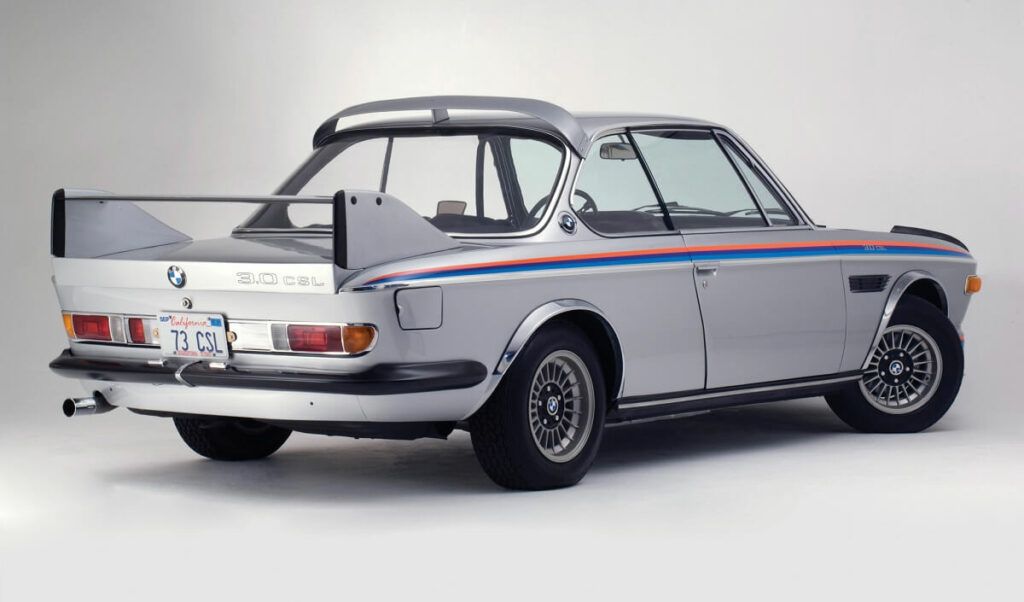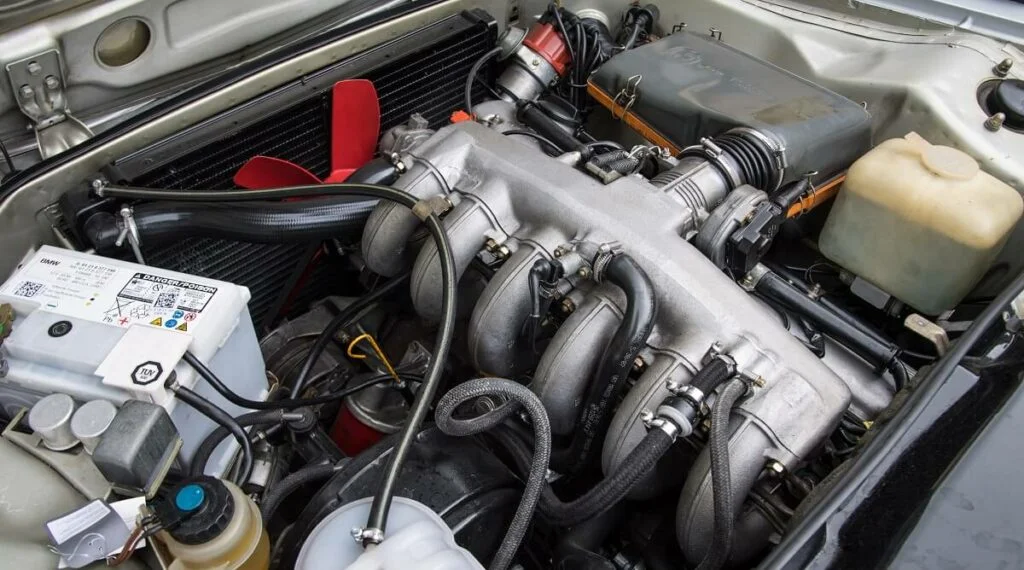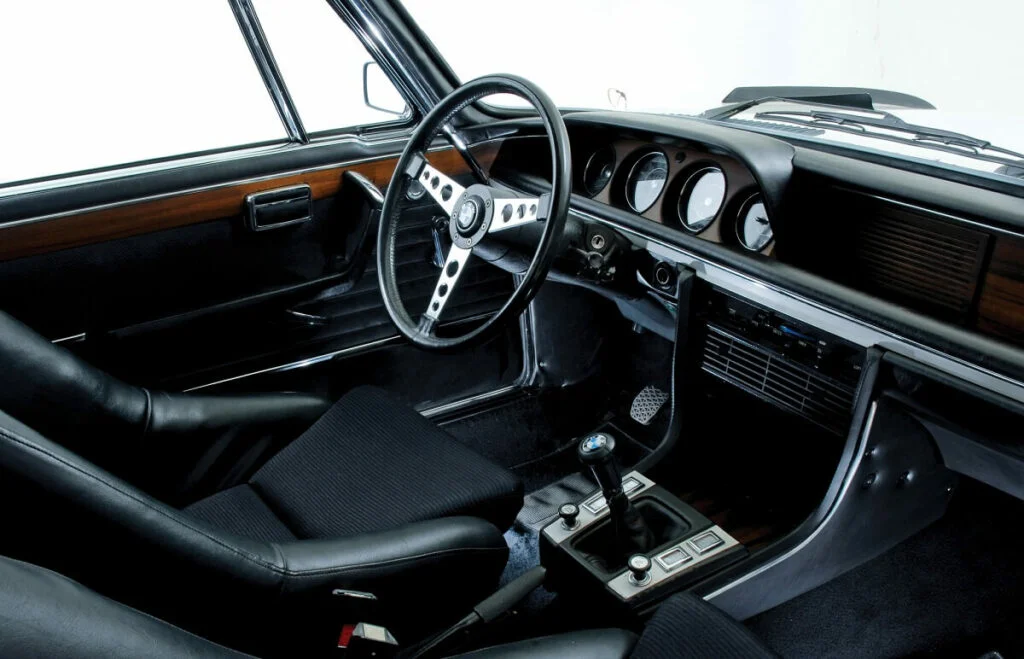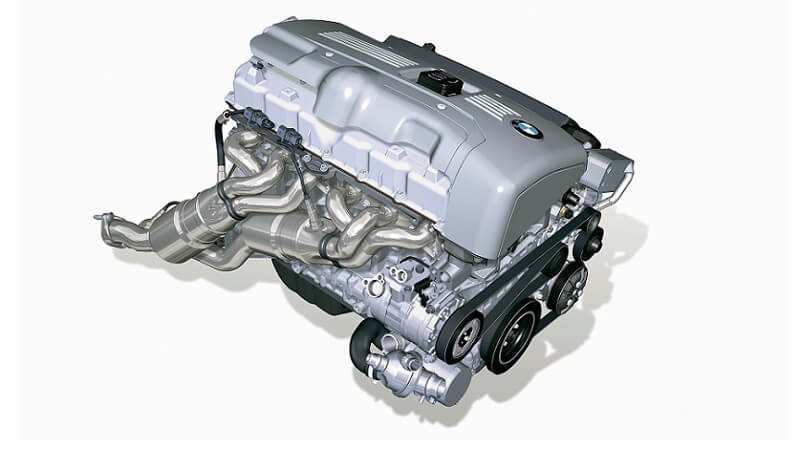From 1968 to 1975, the BMW E9 range of coupés were assembled at the Karmann factory in Rheine. The E9 was the successor to the popular New Class Coupés and over its 7-year production run was available in four guises. While all of them hold a respectable position in the German manufacturer’s storied history, the penultimate one, the BMW 3.0 CSL, reigns supreme.
The BMW 3.0 CSL was built to homologate the E9 for the European Touring Car Championship. Based on the 3.0 CS, the CSL, or Coupé Sport Leichtbau, was a sharper, faster, and lighter iteration of the car it was built on. It brought home a number of trophies for BMW, but it’s more fondly remembered as the very first car to be conceived by BMW Motorsport GmbH, or the BMW M Division as we know it today.

The Turning Point for BMW
The E9 was the range-toppin BMW coupe at the time, so it was only natural that the German manufacturer intended to go racing with it. BMW had already experienced decent success in the European Touring Car Championship with the older 2000Ti and 2002 cars. What made the BMW 3.0 CSL a much more notable contender was the fact that it was the company’s first purpose-built racecar.
The turning point came with a change in management. Bob Lutz, a visionary in the automotive world was appointed as Executive Vice President of Sales in 1972. He went on to recruit Ford’s Head of Motorsport and racing driver, Jochen Neerpasch. Neerpasch took the 1972 Deutsche Rennsport Meisterschaft (the series that preceded the DTM) with him to BMW to put together a special racing division.
In May 1972, BMW Motorsport GmbH was officially established with just 35 employees — their first project was the BMW’s 3.0 CSL. While it never wore the badge, you could argue that the CSL is the very first M car.
Up until this point, BMW made road cars that they decided to go racing with. The CSL, on the other hand, was made only to allow the manufacturer to go racing. The European Touring Car Championship rules stated that 1,000 road cars had to be produced to allow a model to be eligible for participating in the championship. As a result, the BMW 3.0 CSL was born. A total of 1,265 units were produced with the car first being unveiled at the 1971 Geneva Motor Show.
The BMW 3.0 CSL also holds the privilege of being the first BMW Art Car. Two of them were made, the first by American sculptor Alexander Calder, and the second by Frank Stella. It also set the stage for the E24 6-Series, and the later E30 M3. And arguably, every M car that ever followed in more ways than one.
BMW 3.0 CSL Through the Years
Over its lifespan, the BMW 3.0 CSL went through multiple changes to better aid its intention of winning on race day. Initially, the car featured the same 2,986 cc inline-six engine as the 3.0 CS that preceded it.
In August 1972, this M30 engine was soon given a minor increase in displacement to 3.003 cc. BMW did so by increasing the engine bore by just a quarter of a millimeter to 89.25 mm. The reasoning behind this was rather simple — the German manufacturer intended to go racing in the “over three liter” category and the bump in displacement was a necessity.
The BMW 3.0 CSL was also much lighter than the regular E9 coupe. The L in CLS stands for leicht, or light in German, which explains the weight reduction. It used several aluminum components, thinner-gauge steel, and plastic windows to shed over 470 pounds from the standard car.

In 1973, a year after the first iteration was revealed, BMW made some further revisions to the engine, increasing displacement to 3153 cc, thanks to a longer 84 mm stroke. This also saw power increase to 203 hp. Later that year, the final iteration of the car was revealed. BMW and Alpina developed a radical aerodynamic package for the CSL to reduce drag and lift at racing speeds. This aerodynamic package would gain the car its famed ‘Batmobile’ nickname.
With a large air dam, fender-length fins, a massive rear wing, and an interesting spoiler above the rear windshield, the BMW 3.0 CSL was ready to cement its name at the top of the standings and in the history books.
Interestingly, neither of the rear spoilers that were such a defining feature of the BMW 3.0 CSL were factory-fit. They were prohibited by German laws, so they were left in the trunk on delivery, ready for you to put them on as soon as you left the dealership.
A True Motorsport Icon
The BMW 3.0 CSL made its racing debut at Monza. It would go on to win its first race, but not from a factory effort. One of the BMW works cars piloted by Hans Stuck and Chris Amon would retire owing to a piston failure; the other at the hands of Toine Hezemans and Dieter Quester was forced to quit thanks to issues with the wheel bearing. It was the Alpina-run version of the car at the hands of none other than Niki Lauda and Brian Muir that gave the CSL its first victory.

In its first year, the BMW 3.0 CSL would participate in multiple other races, including the 6 Hours of the Nürburgring. Here, with the duo of Hans-Joachim Stuck and Chris Amon at the wheel, the ‘Batmobile’ would take another victory. In the same race, Niki Lauda, driving an Alpina-supplied CSL, set a new lap record of 8:21.3.
The BMW 3.0 CSL also won its class at the 24 Hours of Le Mans in 1973.
However, its most successful outing was at what it was built for — the European Touring Car Championship. It dominated the series and won 6 of its 7 outings from 1973 to 1979, when it went out of production. It missed out on a victory in 1974 after BMW reduced its motorsport efforts that year owing to reduced sales brought about by the OPEC oil crisis of 1973-1974.
How Much Does a BMW 3.0 CSL Cost?
The BMW 3.0 CSL is an incredibly rare car and only a handful of them will probably be on the market again. In the recent past, the cars have sold for upwards of $150,000, with well-maintained, mint-condition cars demanding upwards of $220,000. If you’re ever lucky enough to find one that costs less, it might be because it requires work to get back to factory-spec running order.

Rebuilding the engine will set you back at least $15,000, and then there’s the cost of anything interior/exterior related that need repair or replacement. If you want to get a better idea of how deep your pockets need to run to restore a BMW 3.0 CSL, let’s just say that getting sunvisor clips for this car can set you pack $300 or so. Now imagine how much a engine components can cost? .
BMW 3.0 CSL — A Tale for the Ages
In the late 1960s and 70s, the theory followed by multiple manufacturers was to “Win on Sunday, sell on Monday.” A car that enjoyed success on the racetrack was bound to draw attention to the brand’s road cars. The BMW 3.0 CSL, despite its success on the racetrack, didn’t necessarily do much to boost the standard E9 series’ sales; however, it created the image that the German manufacturer’s road cars were closely related to its racing entrants.





